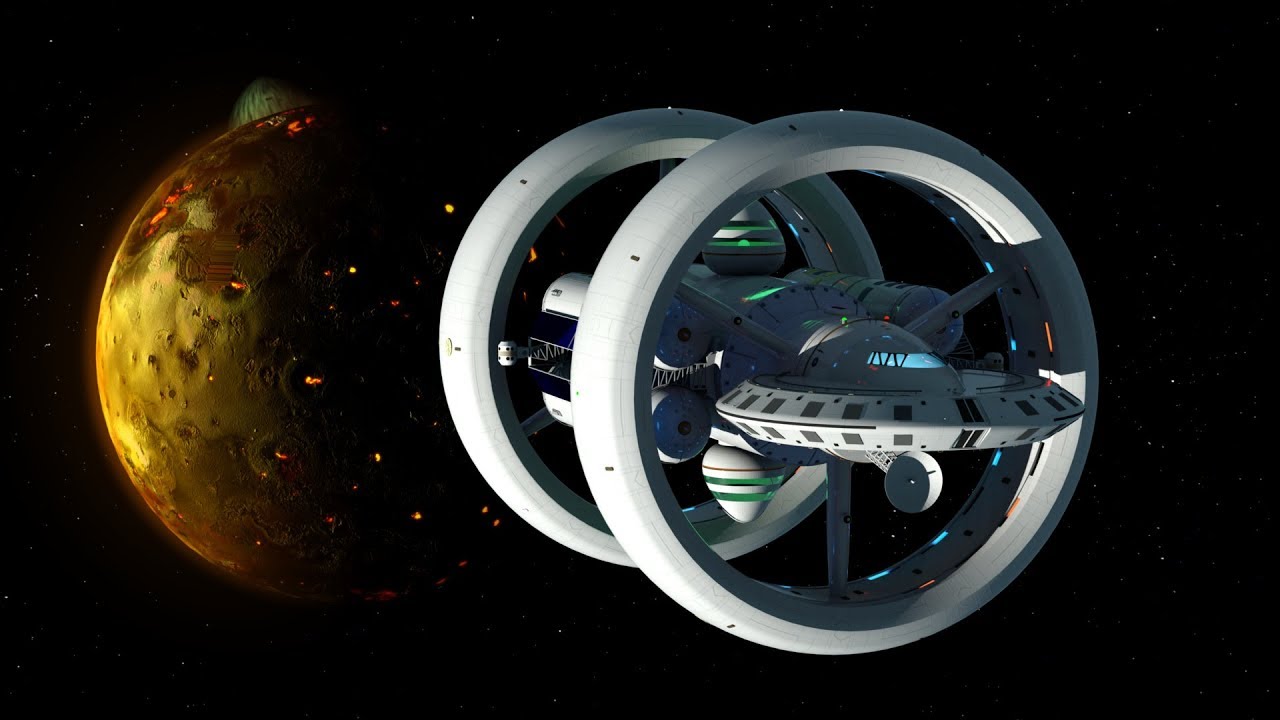Erik W Lentz, an astrophysicist from the University of Göttingen, Germany, proposed a theoretical solution to create Warp Engines, which will allow spacecrafts to travel in space at a speed higher than the speed of light.
“Classical and Quantum Gravity” magazine notes that if such engines were created, humans would be able to reach nearby planets and return within a few years, instead of tens of thousands of years.
The problem is, according to Einstein’s general theory of relativity, it’s physically impossible for anything to travel faster than the speed of light. That’s because as an object moves faster, its mass increases, so by the time you reach the speed of light that mass would approach infinity requiring infinite energy to accelerate to that speed.
In 1994, Mexican theoretical physicist Miguel Alcubierre outlined a design for a warp drive that could theoretically allow something to travel faster than light without breaking any physical laws.
The idea involves generating a bubble of negative energy around an object, so that the fabric of spacetime ahead of the object contracts and the space behind it expands. In the center is a “flat” region of spacetime where the object can travel in comfort, where any occupants wouldn’t even feel like they’re moving.
Of course, in theory, moving at a speed higher than the speed of light is possible, if the dark energy in outer space around the craft is redistributed, so that there is an excess of it behind it, and a region of negative energy in front of it.
But – we currently know nothing about dark energy, and – based on Einstein’s theory of relativity, to redistribute a large number of hypothetical matter particles, which have strange properties, we need huge amounts of energy.
Solving this issue was the goal of the new paper. Göttingen University astrophysicist Erik Lentz proposes a way to create one of these “warp bubbles” from positive energy sources.
While studying previous warp drive suggestions, Lentz realized there were specific configurations of spacetime bubbles that had been overlooked. These bubbles took the form of solitons, compact waves that travel at a constant velocity without losing their shape.
Solitons in space–time capable of transporting time-like observers at superluminal speeds have long been tied to violations of the weak, strong, and dominant energy conditions of general relativity.
The negative-energy sources required for these solitons must be created through energy-intensive uncertainty principle processes as no such classical source is known in particle physics.
This paper overcomes this barrier by constructing a class of soliton solutions that are capable of superluminal motion and sourced by purely positive energy densities.
The solitons are also shown to be capable of being sourced from the stress-energy of a conducting plasma and classical electromagnetic fields. This is the first example of hyper-fast solitons resulting from known and familiar sources, reopening the discussion of superluminal mechanisms rooted in conventional physics.
Solitons are seen under certain circumstances in waves in water, atmospheric motions that produce strange cloud formations, or light traveling through different media. In this case, solitons are propagating through spacetime itself.
Lentz found that certain soliton configurations could be formed using conventional energy sources, without violating any of Einstein’s equations – and without requiring any negative energy densities.
Lentz says “If we can generate enough power, the trip to Proxima Centauri inside the warp bubble would take, according to his calculations, only four years, while using current technology would take more than 50,000 years”
“This work has moved the problem of faster-than-light travel one step away from theoretical research in fundamental physics and closer to engineering,” says Lentz. “The next step is to figure out how to bring down the astronomical amount of energy needed to within the range of today’s technologies, such as a large modern nuclear fission power plant. Then we can talk about building the first prototypes.”
Sources:
- https://iopscience.iop.org/article/10.1088/1361-6382/abe692
- https://arxiv.org/abs/2006.07125
- https://phys.org/news/2021-03-potential-real-physical-warp.html
- https://www.sciencealert.com/how-feasible-is-a-warp-drive-here-s-the-science
- https://www.universetoday.com/143422/just-how-feasible-is-a-warp-drive/


